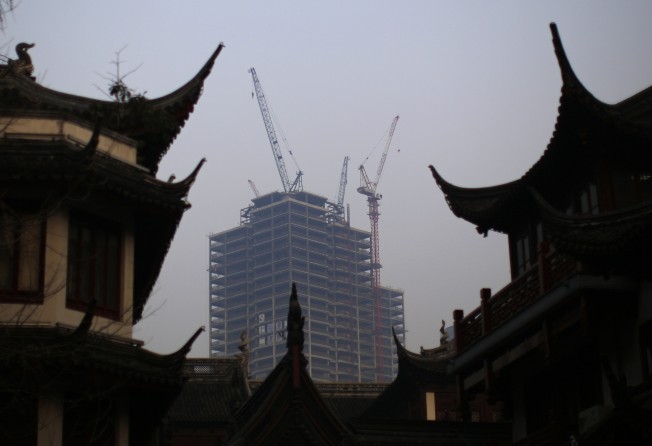China’s bitter home truths

Around the turn of the 20th century in New York, there was a frenzy of residential development in Harlem, to complement an “El” train that would allow for a quick commute into the business district of Manhattan. But then a real estate crash ensued, and the up-and-coming district found it had to rent to groups that would never have gotten the chance to live in fine brownstone townhouses: first, Italian and Eastern European moved in, and later, during yet another crash, African Americans.
In this manner, New Yorkers made the best of a bad situation. For a contra-example, consider the tallest skyscraper in Caracas, Venezuela, built during a period of irrational exuberance in the late 1990s, and never occupied. That is, until residential squatters began moving into the abandoned skyscraper a few years ago, where they still live, in dangerous, unhygienic, lawless conditions.
Both of these are examples of “repurposing” – one clearly a more benign example than the other. They come to mind when one considers the dilemma in China, with empty skyscrapers scattered in various locations across the country. Do China’s “ghost towers” need to be repurposed? And if so, how?
First, let’s put things in perspective. In the past 20 years, China’s urban population has expanded by more than 350 million people. This is like building two New York cities a year. It is not a great surprise that an undertaking of this magnitude would overshoot a bit here and there.
That said, the excess supply is still out there, weighing both economically and psychologically on the oversupplied cities, which include Wuhan, Chengdu, Nansha – big cities but not first-tier cities.
The hope seems to be that over time, the housing will be absorbed as demand catches up with supply. After all, the pace of urbanisation is slowing, but is far from over. The consultancy McKinsey predicts another 300 million urban residents will be added by 2025, the bulk of them migrants from rural areas.
Last year Chinese authorities announced a plan to help the smaller cities take up the flame of future urbanisation. This involves further liberalising the hukou residency-permit system in smaller cities, while keeping it tight in first-tier cities, which are considered already at capacity.
Yet migrants still prefer the wages and opportunities the first-tier cities offer; and municipalities remain cheapskates about the fiscal expense of offering education, health care and other benefits that come with residential status.
Which brings us back to the repurposing issue – can “cheap, oversupplied” housing somehow become part of the solution? After all, most of the oversupply is in second-, third- and fourth-tier cities.
One problem is that there has not been a property crash in China – and no one wants one. Harlem’s oversupply got filled only after the bottom dropped out of the market, forcing local authorities and developers to salvage what they could by renting to groups previously discriminated against. This was a “take the pain and move on” approach.
But China’s municipal authorities have been trying to prevent developers from dropping prices too low in order to attract buyers. They seem to be worried either about the wealth destruction of existing homeowners, or setting off a domino effect that creates a property crash. Or maybe they’re just worried about depressing the value of land, on which they depend for revenues.
Another, more radical solution would be a “bad bank” approach, where the state buys up the housing oversupply, repurposing it into public housing or rental units. A large public housing market seems costly, but in fact has keep land prices high in Hong Kong and Singapore, thus boosting revenues.
This solution is unlikely to happen, most obviously because this type of bailout, especially if centrally funded, could create moral hazard, encouraging more bad planning in future.
So China is left kicking the can down the road, in a Greek-like manner. In cities with expanding economies and populations, like Chengdu, the overhang might clear up in time. But the process is slow, painful and manipulative. Developers are being propped up and bank loans being rolled over. Not only does this create financial risks and supply overhang, but it rules out the chance to spin positives from a bad situation.